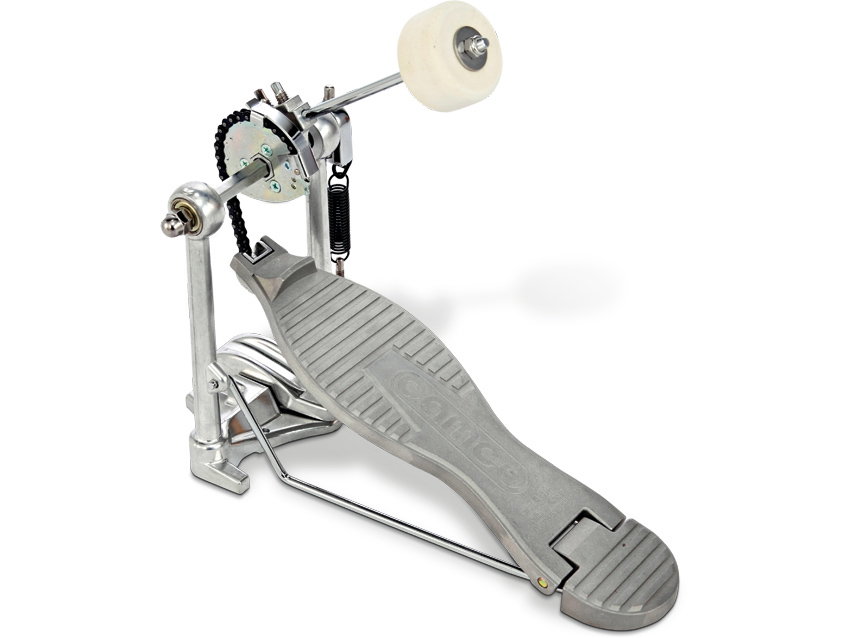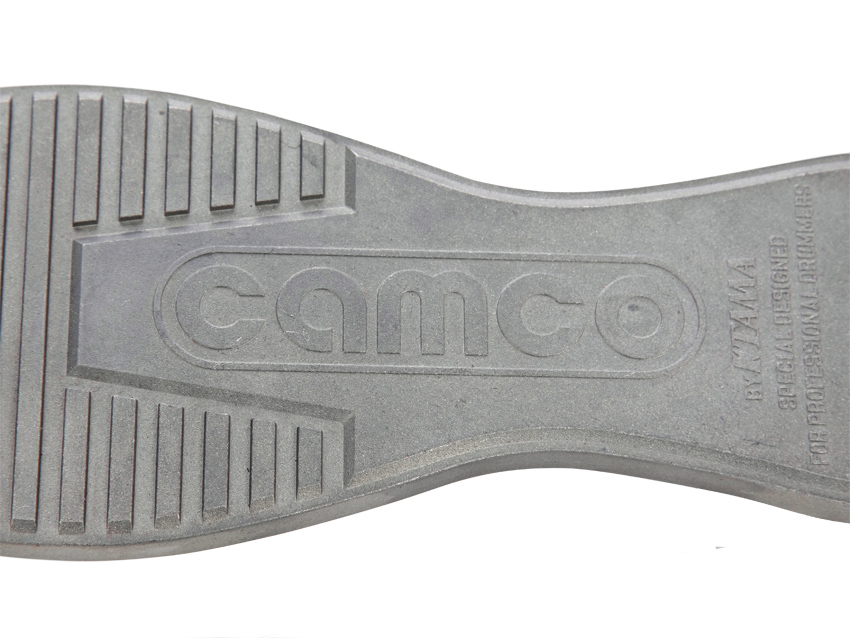MusicRadar Verdict
The stripped-down design of the Camco pedal is elegant simplicity personified - what it lacks in bells and whistles it makes up for in panache.
Pros
- +
Smooth, responsive and lightning-fast action.
Cons
- -
Less solidity and adjustability than more modern pedals.
MusicRadar's got your back

Tama Camco Anniversary Pedal

Tama Camco Anniversary Pedal
First launched in 1981, Tama's Camco pedal was in production for two decades before being discontinued in 2001.
Such is the pedal's enduring popularity that many drummers are still using ageing examples of it today, among them talented metal monster Gene Hoglan. After years of requests Tama has relaunched the pedal, albeit on a limited basis.
"Underfoot, the sleekness of the design really makes sense, as the action is smooth, eager and blindingly quick."
Build
From the mid-'50s to early-'70s, Camco was a respected US drum and hardware manufacturer. Dennis Wilson of the Beach Boys played a Camco kit for a time and these days the company's drums are reasonably collectible.
Camco's name and rights were eventually divided between Tama and a small LA-based collective called Drum Workshop - the signature turret lugs found on all DW drums are derived from a Camco design. Camco's influence can also be seen in first-generation 5000 series pedals.
Back in 1981 Tama took the Camco pedal design and added a chain drive and toothed sprocket; little changed over 20 years of production.
The 30th Anniversary model features an improved frame construction and upgraded rocker cam, but otherwise it's a faithful reproduction of the original. The curvaceous and ribbed footboard still sports the main Camco logo with a much smaller Tama insert.
Hands On
In comparison with today's 'engineering triumph' class of pedals, the Camco looks physically slight. There is no baseplate, the beater is of the symmetrical felt variety and the hoop clamp wingnut is located directly beneath the footboard.
Such retro details are part of the pedal's charm. Rather than offering endless adjustability, the Camco is an uncomplicated, built-for-speed tool.
Underfoot, the sleekness of the design really makes sense, as the action is smooth, eager and blindingly quick. While modern, heavy-duty pedals have the edge in terms of sheer power and solidity, I found the Camco's razor-sharp reflexes and all-round responsiveness a liberating playing experience.
I confess that I owned one of these pedals first time around so my feelings are warmed by nostalgia. However, with a strong market for classic drums and cymbals, surely classic hardware deserves equal recognition?
“A synthesizer that is both easy to use and fun to play whilst maintaining a decent degree of programming depth and flexibility”: PWM Mantis review
“I feel like that song had everything we needed to come back with”: Bring Me The Horizon’s Lee Malia on Shadow Moses, its riff and the secrets behind its tone, and why it was the right anthem at the right time
“I said, ‘Are we sure we can write a song about death?’”: The story of Mike + The Mechanics' classic No.1 The Living Years









